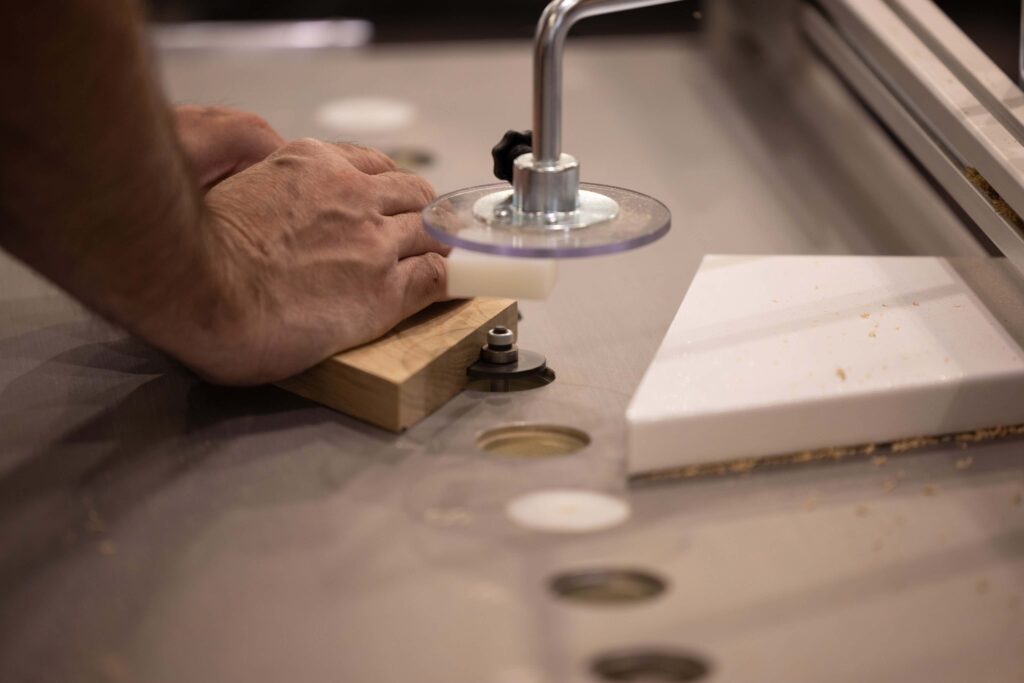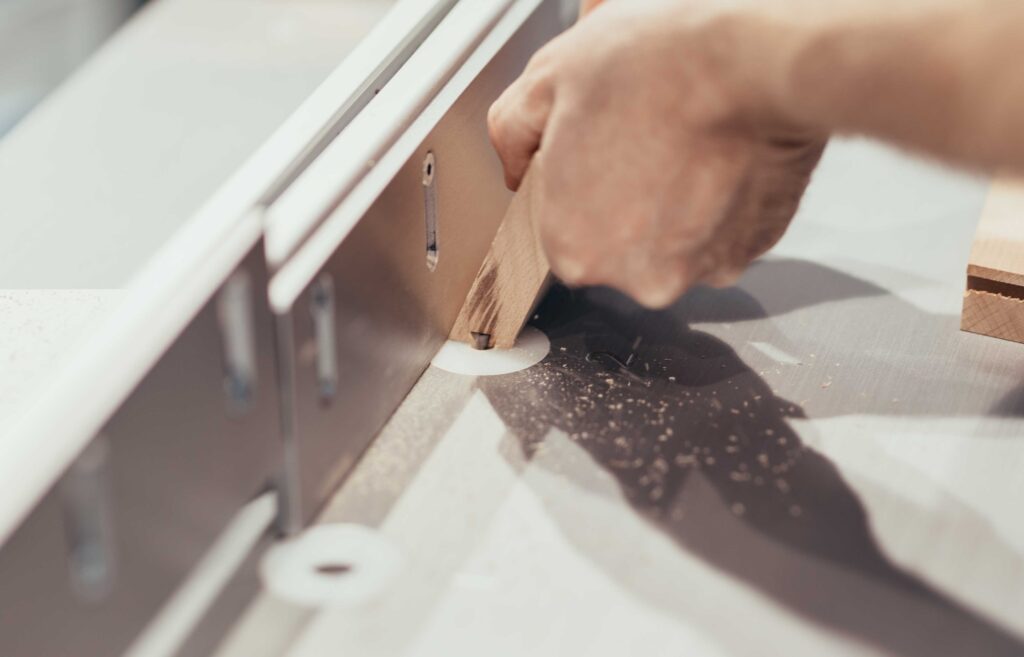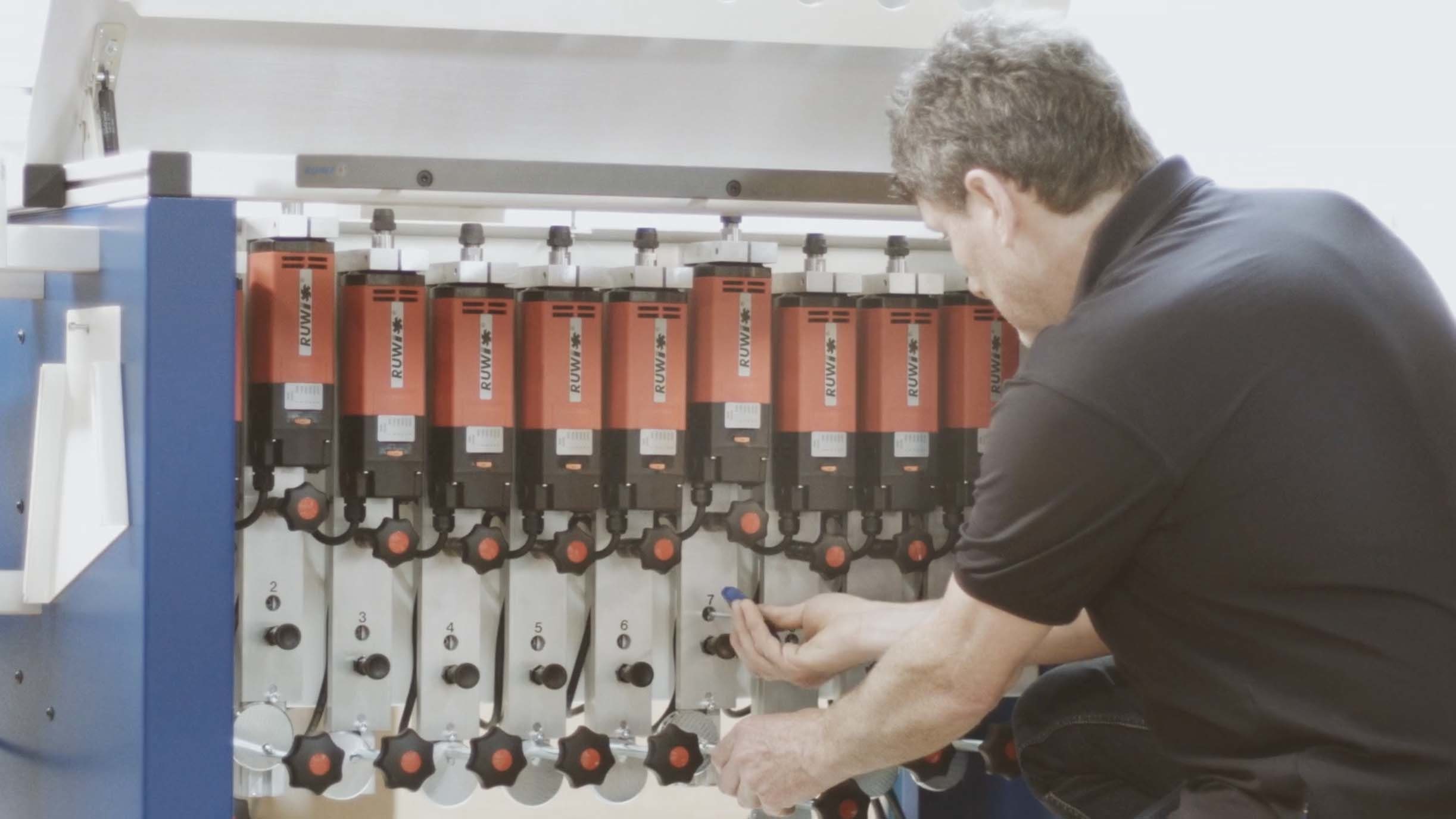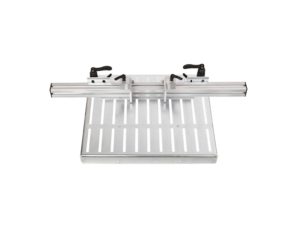Milling processes in woodworking
Where there is planing, there are shavings – this also applies to the successor to the classic planer, the milling machine, which is often computer-controlled today. With modern milling tools, a large number of processing operations can be carried out, which allow companies in the woodworking sector to produce flexibly and precisely at a high level.
What are milling processes and which milling method is best suited for my purpose? Here we explain which milling process you can use to achieve high-quality work results when milling and give you an overview of the milling techniques in woodworking. But you will also learn which advantages and disadvantages are associated with the respective milling process and which points must be considered before deciding on a milling process.
Table of contents
Definition: What are milling processes?
Milling process refers to a cutting technology with which material is removed from the workpiece by circular movement of a milling cutter. Workpieces made of wood, metal and plastic can be milled. In woodworking, milling tools are used in areas such as furniture construction, interior design and window construction in order to achieve functional and decorative effects with special milling inserts. Only the targeted selection of milling processes and milling inserts guarantees high-quality work results.
Overview: Which milling processes are there?
The milling process is selected based on the requirements of a milling project. With these milling methods, workpieces can be machined on milling machines:
- CNC milling
- Profiling
- Face milling
- Form milling
- Circular milling
- 3D milling
- Face milling
- Screw milling
Empfehlung: RUWI Frästisch für CNC-Fräsen mit Holz
Fasen, nuten, runden, schleifen, entgraten, bündigfräsen – mit dem RUWI Frästisch (einer mobilen Tischfräsmaschine) ein halbstationäres System im Bereich der Holzbearbeitungsmaschinen, das präzise Fräsarbeiten an einem stabilen Arbeitstisch und höchste Flexibilität gleichermaßen ermöglicht.
Jetzt mehr erfahren und informieren: RUWI Frästisch
How are milling processes divided?
Which of the milling methods is suitable for processing a workpiece results from the key data of a project. Material, purpose and shape are some of the parameters used to categorize milling processes.
Simple, cylindrical and flat surfaces: face milling, round milling
Face milling is an effective method for producing flat surfaces and steps. In face milling, the feed motion is linear. Round milling is suitable for producing cylindrical surfaces such as round tenons. Different requirements can be met by external round milling and internal round milling.
For profiles: profile milling
Milling a special profile into a workpiece in one operation? This works with a profile milling tool. Profile milling can be carried out as longitudinal profile milling and circular profile milling.
For curved surfaces, preferably in mold making: form milling
A complex three-dimensional structure can be produced during form milling by means of a controlled feed movement. NC form milling and contour milling are two methods of form milling.
For highly productive and efficient machining: CNC milling, 3D milling
The numerically controlled CNC milling scores with versatility, speed and accuracy. The efficient 3D milling machines, which work in several movement axes, allow complex milling work to be carried out at economical costs.

Overview: Milling processes in woodworking
When using milling machines, companies in the wood processing industry expect efficient and precise results. The individual milling processes represent specialized machining processes with which companies can manufacture workpieces economically and reduce production costs.
CNC milling
Computer-controlled milling machines work with high-speed precision spindles and can be equipped with a large number of milling cutters. A modern 5-axis milling machine offers up to 32 tool stations. Due to its versatility , CNC milling is used in manufacturing companies in all sectors. When milling wood, companies from the furniture construction and other wood processing companies also benefit from economically working CNC milling machines.
circular milling
With special milling heads, round tenons and cylindrical cutouts can be produced during circular milling. Depending on the intended use, tools such as rounding cutters, copy cutters or fitting cutters are used for the circular removal of material. Round milling is often used in woodworking to finish round saw cuts.
form milling
With form milling, workpieces should be given a complex three-dimensional shape or a special type of profiling. Special milling heads are used for this purpose, which allow efficient production with large volumes. Since high precision is desired when milling shapes, this milling process is almost always carried out on CNC milling machines.
screw milling
For the production of screws, threads and spindles, thread milling cutters tailored to the workpieces, such as multi-range thread milling cutters and drilling thread milling cutters, are used for screw milling. In furniture construction, zinc connections are often used instead of screw connections for decorative reasons. With a dovetail cutter, dovetails can be milled that ensure a tight fit of the components.
Face milling
There is a large range of milling heads for face milling, as this is the most common milling process across all sectors. Users most frequently use milling heads with a setting angle of 45 degrees. With a 45 degree cutter, woodworking companies benefit from low vibration with moderate to good productivity. In order to increase output, milling cutters with shallower angle sizes down to 10 degrees setting angle can be selected for small milling depths.
face milling
Face milling is characterized by high efficiency and is used to remove material from large areas. When processing workpieces made of wood, face milling cutters can be used to achieve smooth surfaces of homogeneous quality. Similar to face milling, a variety of milling tools are available for face milling.
profiling
In woodworking, many milling processes serve decorative purposes. Profile milling is a milling technique that is often used, especially in the furniture industry. Profile milling cutters can be used to add curves, grooves and other decorations to furniture, moldings and frames. Profile cutters with radii of 4 to 18 mm are common for routers.
3D milling
Investing in a 3D milling machine is also worthwhile for small wood processing companies due to the reduced costs. Due to the flexible options that a computer-controlled 3D milling machine offers in terms of milling processes and the mounting of milling tools, unusual customer requests can often be implemented. The use of 3D milling is a prerequisite for form milling.

Milling process according to running direction
The milling direction results from the direction of feed and direction of rotation of the tool. In woodworking, the running direction is a crucial parameter, since milling should be carried out in the direction of the wood fibers if possible. The two variants, up-cut milling and down-cut milling, have advantages and disadvantages that users should be aware of.
up milling
With up-cut milling, the workpiece is fed in the opposite direction to the direction of rotation of the milling cutter. In this process, the teeth of the milling cutter first slide over the workpiece and dig deeper and deeper into the material – the chip thickness increases. This is accompanied by increasing friction and, depending on the hardness of the wood, high temperatures. The radial forces can cause thin workpieces to chatter or be lifted. The feed rate must therefore be adapted to the material and milling tool.
climb milling
During climb milling, the milling tool rotates in the feed direction. In contrast to up-cut milling, the chip thickness decreases in the course of the throughput. This creates a desirable polishing effect. Since the tiller rotates in the direction of travel, it also takes over part of the feed. The feed is therefore more difficult to control overall than with conventional milling. It should be noted that climb milling is not allowed in some environments due to the higher risks.
What is the difference between milling processes?
The individual milling processes were developed in order to achieve high-quality milling results with little effort. If you opt for a milling process such as profile milling, you can use a large number of milling tools to achieve the desired result in one operation. The differences between the individual milling processes also result from the nature and structure of the milling tools.
Important parameters are cutter position, arc of contact and pressure angle. Another aspect is the feed, which can be counter-rotating or synchronous. Through the combination with CNC milling machines, the right milling machines can be found for almost all purposes and materials in wood processing.
Milling process advantages and disadvantages
When selecting the milling process, it is about finding the best compromise between high cost-effectiveness and high processing quality. When milling wood, there is no cooling with a cooling liquid – this is particularly important when milling hardwood. In order to avoid tilting of the milling cutter in the wood, the feed and speed of the milling cutter must always be matched to the wood material.
The advantages and disadvantages must also be weighed up when deciding between down milling and up milling. In the case of hard wood, up-cut milling is associated with increased stress on the cutter and workpiece, but it is a safe process. Down milling puts less strain on the material, but the process requires an experienced user and precise coordination.
FAQ
RUWI products for woodworking



